
There is nothing more exciting than waking up on opening day, with your pack filled and your gear dialed in ready to go!
To get there, you’ll need to make sure all the finer details are taken care of. Do you have the right camo set up? Is your clothing and footwear suited for the weather and terrain you expect to experience? All of these and more can make the difference between a successful hunt and one where miserable conditions get the best of you. Luckily, we have insights from the best in the business to make sure you have what you need to focus in on making the shot when it counts.
When choosing the appropriate clothing and footwear for a hunt there are three major categories: Terrain, weather and style of hunt.
Terrain
Understand the terrain you will be hunting on and plan for the worst. Cold or wet feet are no fun and can ruin your day in the stand. Steep or uneven rocky terrain calls for footwear that delivers solid ankle support and better traction than rubber boots. Remember, you may be walking in and out in the dark. Does your footwear choice give you the confidence to go that extra distance you need to be successful?
Weather
Nobody can perfectly predict what Mother Nature will throw at you. Sometimes you’ll face changing conditions during the course of the day. How hot or cold is the area you're hunting in? How wet or dry is it? These conditions will, not only determine the weight of clothing and footwear you need, but also determine whether or not you need rain or UV protection!
Style of Hunt
Will you be on the move covering miles, or stationary in a stand or blind? If you’re stationary and it’s cold, quiet clothing may not be a priority but warm clothing will be. If you’re on the move, you will need light clothing and boots appropriate for the conditions. If your style is spot-and-stalk then you’ll need exceptionally quiet and soft clothes with scent control for sneaking around undetected.
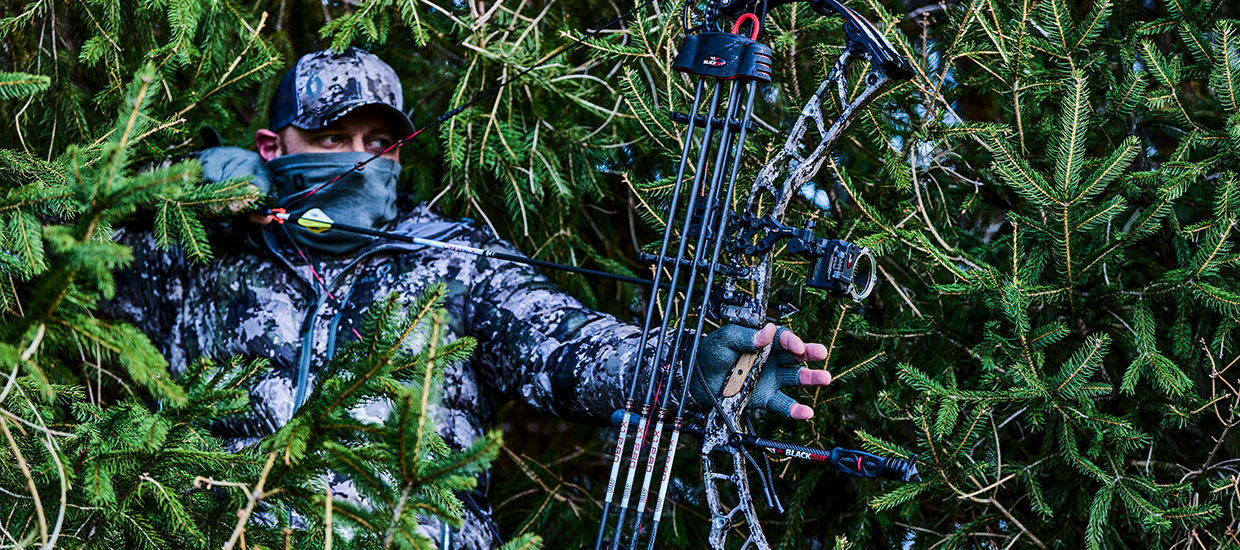
Deer Calling Tips & Strategies
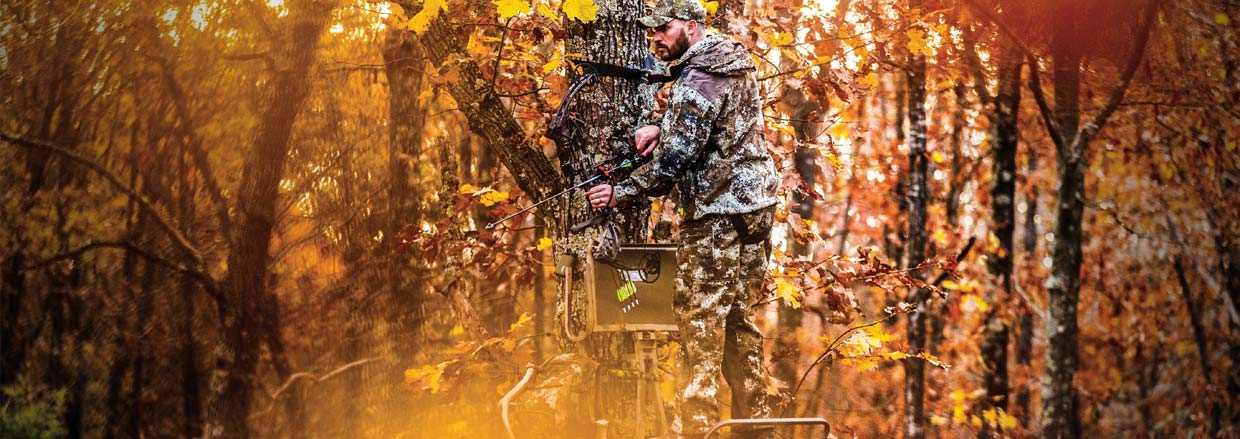
Helpful Deer Calling Tips
Whether you are hunting during the pre-middle, or post-rut season, here are the best calling tactics to attract your deer.
- Calls: Begin your calls softly and slowly increase the volume.
- Try Different Calls: Change your calls as the season changes.
- Be Ready: Be ready to take the shot. Since you cannot always predict when the deer will be in your range, have your weapon ready to go with safety precautions before you start deer calling.
Deer Calling Strategies
Here are the top 4 calling strategies to get you a big harvest.
A fawn in distress wants a doe’s attention. Fawns usually bleat in a high pitch to grab more than 80% of the does' focus. With these calls, mimic the bleats just before the rut and at the beginning.
Shop Bleats
If you are hunting the rut, grunt calls should be your go-to. Bucks grunt to assert dominance over younger ones and attract nearby does. A mature buck has a lower grunt than a younger buck. If your call is too deep, it could sound like a big male and intimidate other smaller does.
Shop Grunt Calls
The rattling sound mimics the sound of two bucks fighting. It attracts other bucks as they want to witness the scene and know what males are in their territory. For easy hauling, use a rattle bag to mimic the noise of antlers.
Shop Rattling Antlers
When you are hunting in an open country or field, adding a bit of realism to your calling can take you a long way. Set up a doe decoy, and when a buck hears, smells, and sees a doe, you have a good chance for a big trophy.
Shop Decoys & Scents
FIND THE CAMO PATTERN FOR YOUR NEXT HUNT
When choosing camo there is no one "right" pattern. The region you are in and the type of game you are pursuing should determine your choice. From sea-to-sea and season-to-season, finding the right pattern can make you successful on your next hunt.
TRUETIMBER® KANATI

TRUETIMBER® KANATI
Named after a legendary hunter, Kanati combines brush, limbs, twigs, leaves and bark for the realistic pattern that can be used in a wide variety of applications. This camo uses the latest digital design technology to capture the truest colours, details and silhouettes.
TRUETIMBER® STRATA
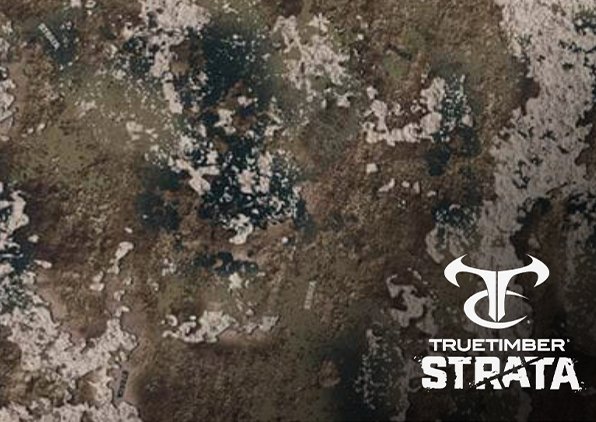
TRUETIMBER® KANATI
A contrast of distinctive shapes and light and dark colours turns your silhouette into a shadow at both close and far ranges. Get an unfair advantage over the buck or whitetail you’ve been stalking with our most advanced camo pattern to date.
TRUETIMBER® VSX
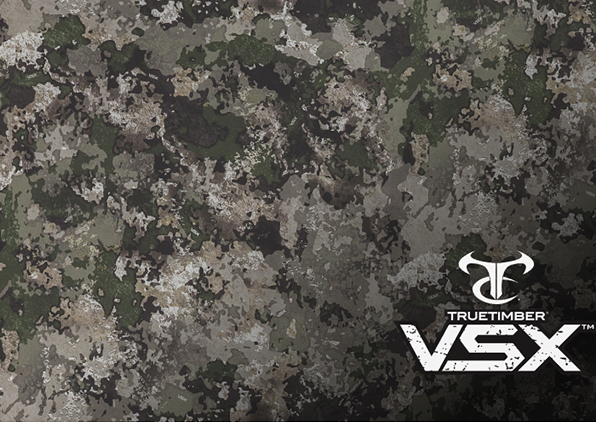
TRUETIMBER® VSX
VSX was designed using our micro and macro schematics technology, making this pattern just as effective from the top of the highest mountain terrains to the wide-open prairies and woodland thickets. The strategic, non-directional shapes and texturization uses lights and darks working together to break up the human outline at close and long distances. The colours are made up of natural grays, browns, and greens found across all outdoor environments and seasons, making this pattern extremely diverse and virtually invisible to any game you're pursuing.
TRUETIMBER® Prairie

TRUETIMBER® Prairie
TrueTimber® Prairie incorporates both macro and micro camo schematics. The macro design breaks up the human outline at all distances while the micro design melts into any terrain at close range. Originally designed as an abstract waterfowl pattern, Prairie has quickly gained traction outside the wetlands, blinds, and marshes sloughs. Prairie can easily transition from open flatlands to open desert terrain and from the tree stand to the duck blind without missing a beat.
Optifade Subalpine

Sitka Soptifade Subalpine
Subalpine is designed for stalking and ambushing ungulates from ground level in tree-covered and vegetated terrain. Subalpine is optimized for engagement ranges of 50 yards and less.
Optifade elevated ii

Sitka Optifade elevated ii
Designed for deer hunters who prefer to scout from above, this pattern matches bright sky against the dark shades of underbrush. Stay undetected from a long range while scouting your prize whitetail in a tree stand.
FOREST / BLACK

FOREST / BLACK
With a colour palette designed to adapt to a variety of hardwoods, UA Forest All-Season Camo is effective anywhere trees are found — regardless of season or foliage. It's perfect for thick bush in early season. Highly adaptable for use in a tree stand or on the ground.
BARREN CAMO / BLACK

BARREN CAMO / BLACK
Built with a colour palette that works best in locations absent of abundant foliage and deciduous forest. These environments include, but are not limited to, high desert, vast desert, rocky/mountainous terrain, and sage fields.
Footwear
Your hunting boots should make you faster, quieter and more comfortable on the hunt. Here are some common types of hunting boots:
Field Boot: These boots offer breathability, comfort and durability, for rugged terrains, mountains and tough trails. Perfect for keeping comfortable while stalking a monster buck.
Rubber Boot: These boots offer the most waterproof protection, so they are ideal for wetlands and rainy conditions. They are also scent free, which helps when sneaking up on game.
Foot care Tips
- Bring more than one pair of boots
- The second you get a blister, use moleskin or a bandage
- Always wear the right size of boots
- Wear good moisture-wicking socks to reduce friction and keep your feet comfy
Technique
Spot and Stalk
This is a popular method for bowhunting big game animals. This technique requires the hunter to spot the animal from a distance and then stalk it on foot to get within range for a shot. It is a rigorous and demanding form of big game hunting.
Conduct thorough scouting. Look for signs:
- Fresh tracks and signs
- Stay downwind of the animal
- Keep in mind the terrain features and the behaviour of the animal
- Range efficiently
Have immense patience.
Stalking Tip
When you are looking for game, glass using a grid pattern. When you find something, use the terrain to hide without losing the gained elevation.
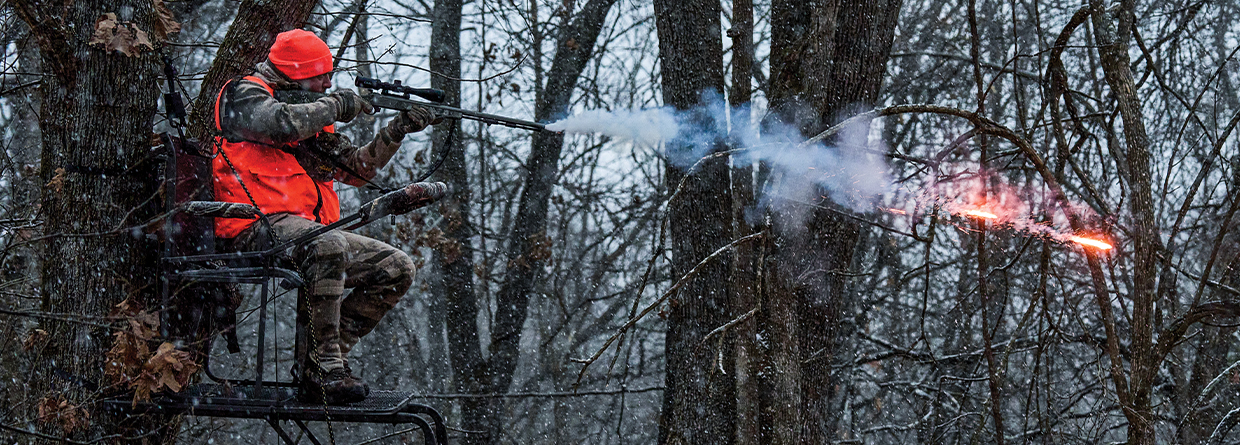
Tree stands:
This involves sitting up in a tree and waiting for the deer to come to you. Though it can be an effective tool, it also requires extra equipment, the right tree and a lot of patience.
- Allows you to spot deer farther off while avoiding being seen
- Requires a large, healthy tree close to a food or water source
- Requires safety gear as you will be sitting 10–20 ft. up
Top Five Tree Stand Tips
- Invest in a stand with an oversized platform if you have large feet.
- Oiling connecting parts in the off-season will eliminate creaking.
- Ensure you have at least two stand sets for your major hunting areas.
- Choose a location with a good backdrop.
- Always wear your safety harness.
Firearms
Bows
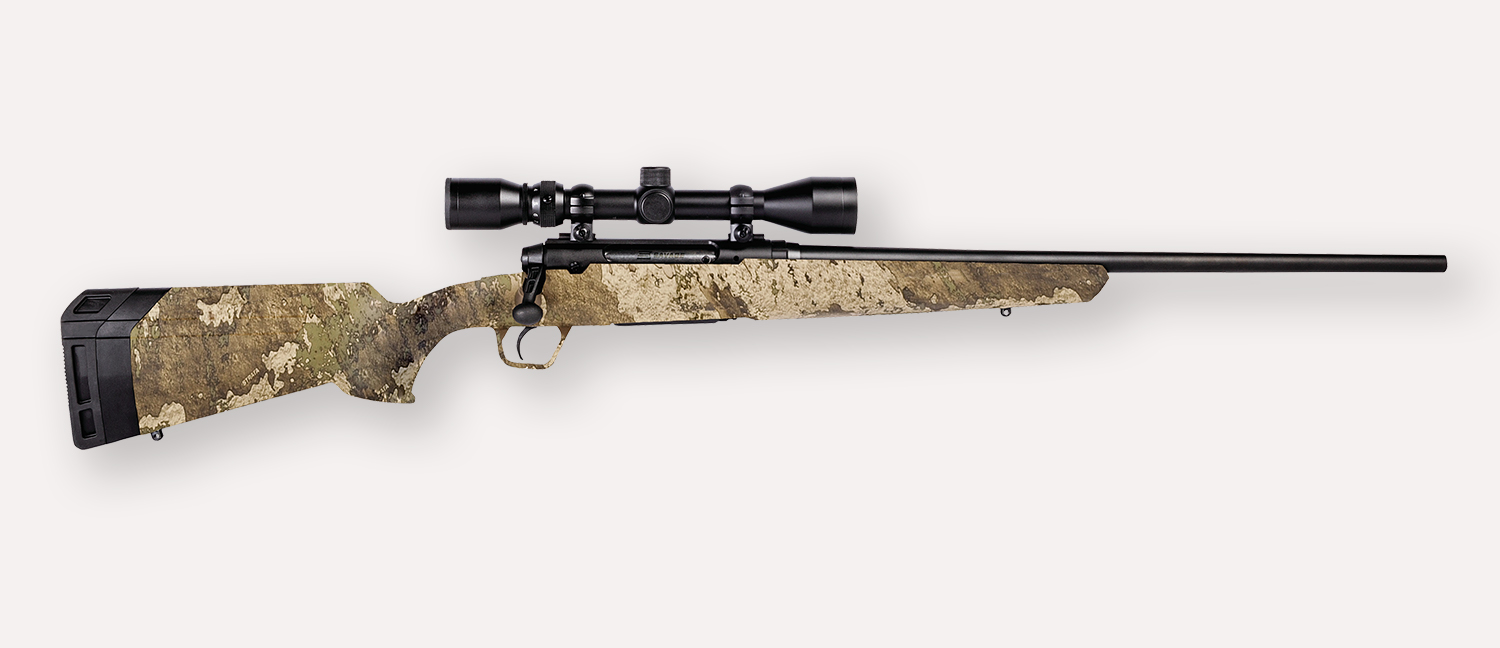
How to Choose the Right Calibre for Deer Hunting
When it comes to finding “the best” cartridges for deer hunt, it depends on a range of factors: the terrain, your hunting experience, how sensitive you are to recoil, and the weight you are willing to carry. Here are a few options that will increase the odds of success to bag your harvest.
The bullet placement plays 70% of the role in downing the game effectively while the remaining 30% is between the energy and performance after impact, which is related to calibre and bullet construction.
Calibre vs. Cartridge
Understanding the difference between calibre and a cartridge:
- Calibre: It is a measure of a bullet’s diameter; the higher the calibre, the bigger the bullet and it usually works well for large game. It is measured in millimetres or inches. For instance: A 9mm Luger or .45 Colt Pistol.
- Cartridge: It combines a propellant substance, primer, a case, a projectile, and other specifications that work together to provide effective and powerful shots.
What to Consider When Choosing the Right Calibre
Generally, every rifle is suitable for deer hunting if it's larger than .22 calibre. With a wide variety of rifle calibres available, consider these aspects:
- Terrain: Using a short, fast-handling rifle or fast-action gun is preferred when hunting in tightly packed trees with dense underbrush. If the terrain has long-range shots in an open area, using a high-velocity rifle topped with a scope.
- Cost: In terms of hunting ammunition, practice ammo is generally inexpensive when compared to quality hunting ammo for most calibres. Check ammo HERE!
- Accessibility: To have more practice sessions, choose your practice ammo that is readily available in-store or online. By picking a common calibre for your deer hunt, you have more loads, designs, and weights versus a rarer calibre that is hard to find.
- Recoil: Calibre with minimum recoil will allow you to practice more as it reduces the chances of flinching. Less recoil can improve your accuracy and shoot from tricky positions. Generally, handing the recoil differs from one hunter to another. However, for most, a recoil past 15-foot pounds could become uncomfortable or sore.
- Range/Power: In deer hunting the standard striking energy is 1000-foot pounds. This amount of energy is usually enough to ethically harvest your game. However, energy alone cannot help you take down the animal. The terminal ballistics of the projectile affect how the energy strikes and behaves inside the deer. If the terminal ballistics are capable, it can disrupt the target’s vitals and cause sufficient damage.
Here are a few calibre options that meet the specified criteria for whitetail deer hunting.
- .243 Winchester: This has been a go-to for new hunters. The .243 Winchester packs enough punch to take down a whitetail deer past 300 yards while delivering only a slight recoil. The smaller calibre allows for shorter barrels that help climb into the tree stands easily. This is a fine choice for beginners because of its wide availability.
- 30-30 Winchester: If you are a lever-action firearm enthusiast, the 30-30 Winchester is for you. This is a classic deer cartridge that's been in use for over 125 years. The bullet allows for deep penetration and terminal performance with light recoil. Although the range is limited, it is reliable.
- 25-06 Remington: This is a lightweight cartridge that ranges up to 550 yards. With high ballistic coefficient, considerable kinetic energy, and moderate recoil, 25-06 Remington ensures a successful hunt.
- 308 Winchester: This NATO cartridge is readily available in a handful of loads. It uses bullet weights ranging from 110 grains to 240 grains. However, it is usually loaded with 150 -165 and 175-grain bullets. The .308 Winchester is a lightweight and precise cartridge that works well past 500 yards. The balance of energy, velocity, and recoil provides accurate shots to take down a deer efficiently. Although this has moderate recoil, with practice and time, the hunter can get acclimated.
- 7mm-08 Remington: This cartridge offers good power at extended ranges without associated recoil. It is versatile, powerful and can handle heavier bullets by maintaining enough velocity to reliably expand up to 600 yards. Although 7mm-08 is the least common, it is readily available for a wide range of rifles.
Types of Firearm Actions
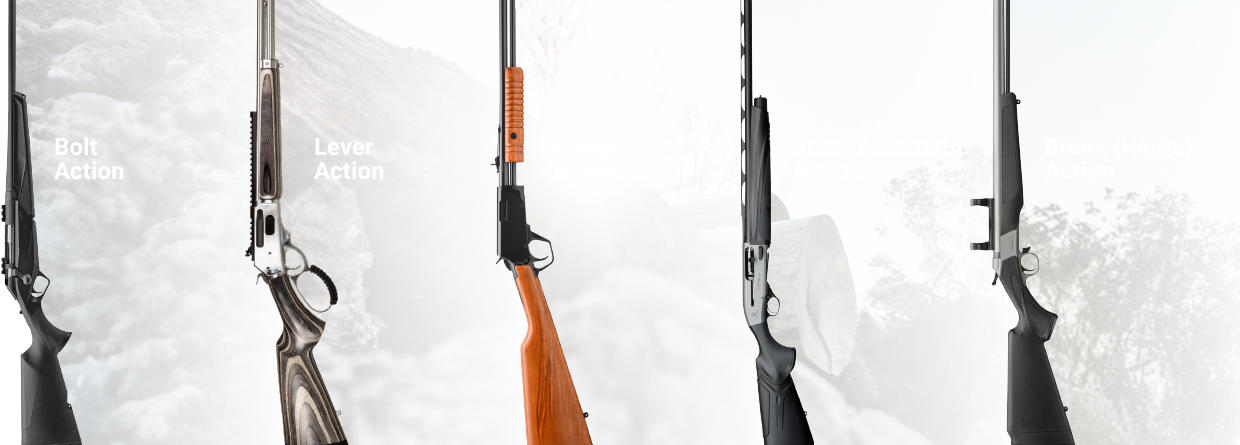
Firearm actions are the mechanisms by which firearms discharge their ammunition. The main types of actions you should know:
Bolt Action: Bolt-action rifles require you to manually operate the gun’s bolt, which means you need to cycle the action every time you fire. However, bolt-action rifles are extremely reliable, and you can always count on them for a perfect shot.
Lever Action: Lever-action rifles use a lever in place of a bolt handle to load and unload the rifle. These firearms are more versatile as they can be used for self-defence and hunting purposes. Lever-action rifles are often easier and lighter to carry.
Pump Action: Pump-action rifles have a manually operated pump handle to cycle the rounds through the chamber. These rifles have a magazine that holds multiple rounds of ammunition, and the shooter must first cock the hammer and then pull the trigger. These rifles are used for both self-defence and hunting.
Revolving Action: Named after their revolving cylinders that contain the gun’s cartridges, revolving action can mainly be used for revolver handguns. They have a chamber that lines up with the barrel each time the weapon is fired. It can either be single or double-action revolvers.
Break Action (Hinge): Here, the stock drops down on a hinge to allow the shooter to load and unload the weapon. This type of action is easy to use, and new hunters and sport shooters tend to start with break-action firearms.
Semi-Automatic Action: With these guns, a pull of the trigger will fire a shot and automatically eject the cartridge and reload another round. Semi-automatic actions differ based on the type of the gun.
- For pistols, the slide is pulled back to open the action.
- For a shotgun or rifle, the shooter pulls back the bolt to open the action.
Accessories
Hearing Aids: Using these is better for hunters who prefer to be on the move. The idea is to move extremely slow and try to sneak up on your game.
Deer Scents and Scent Control: Deer have a very strong sense of smell. When used correctly they can be a powerful tool. Also be sure to control your own scent with elimination clothing and other odor-eliminating accessories.
Deer Calls: Some hunters avoid them out of fear of scaring deer off, but if used correctly they can be a very useful tool. The right call can make the difference between a deer checking you out or deciding to move along.
Blind Accessories: A well-made blind can keep you comfortable and protected while you wait for your prey. A hunting chair, cooler, shelves and a multi-purpose camera mount can improve your hunt experience.
Emergency Communication: A device such as Garmin inReach should be your constant if you plan to venture away from the populated trails.
First aid: A few medications, ointments for burns or anti-bacterial, bandages, tweezers, thermometer, are a few to keep handy with you.
Deer Scents and Scent Control: Deer have a very strong sense of smell. When used correctly they can be a powerful tool. Also be sure to control your own scent with elimination clothing and other odor-eliminating accessories.
Deer Calls: Some hunters avoid them out of fear of scaring deer off, but if used correctly they can be a very useful tool. The right call can make the difference between a deer checking you out or deciding to move along.
- Scopes — increase your range and accuracy
- Binoculars — spot your target far off and scout them as they move
- Rangefinders — use a beam to determine how far off your target is
- Flashlights — added visibility when hunting in low light, useful for spotting tracks
Advanced Big Game
Elk Hunt
A full-grown bull elk can stand as tall as 9 feet, with antlers extending 4 feet above their head. Don’t underestimate the sheer size and weight of these beautiful giants. Hunting elk can be a challenging, but intensely rewarding experience, provided you have the gear and the know-how to get the job done.
Learn more about elk hunting
Moose Hunt
A bull moose in full spread is one of the most imposing animals in the Canadian wilderness. Taller than a saddle horse, large bulls can weigh over 1300 pounds. Hunters who are lucky enough to take down a full-grown moose are rewarded with a ton of great meat!
Learn more about moose hunting
Bear Hunt
An apex predator of the Canadian wild, black bears can weigh up to 900 pounds and boast impressive speed, agility and sense of smell. Take extra care when hunting these majestic creatures. Those who succeed are awarded a beautiful pelt, meat, and a good story or two.
Learn more about bear hunting
